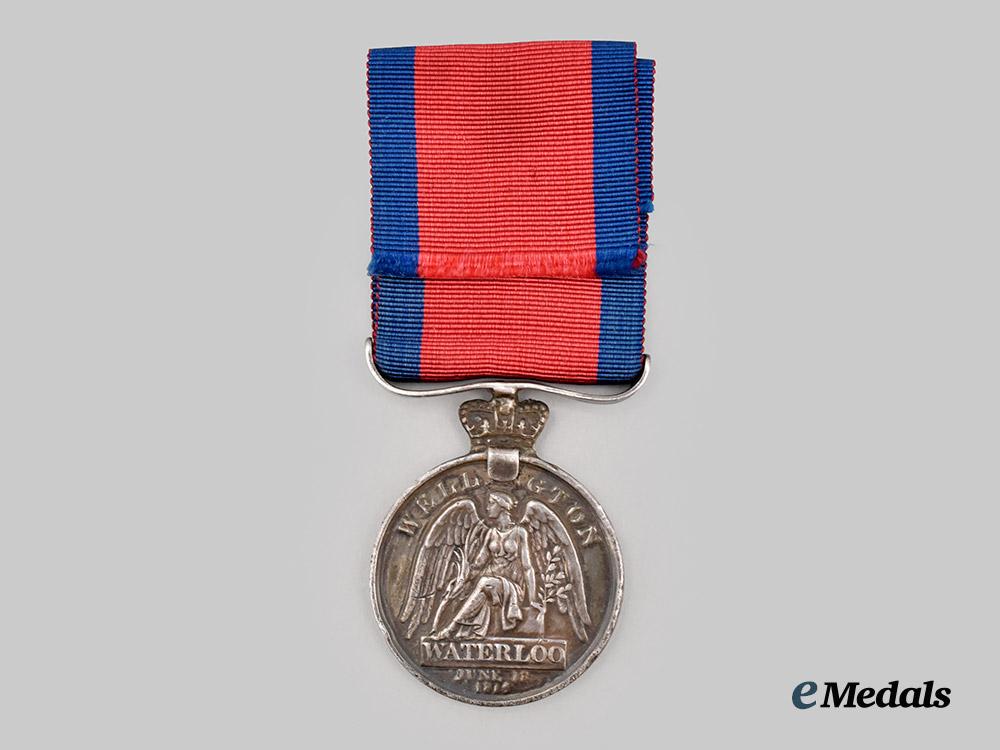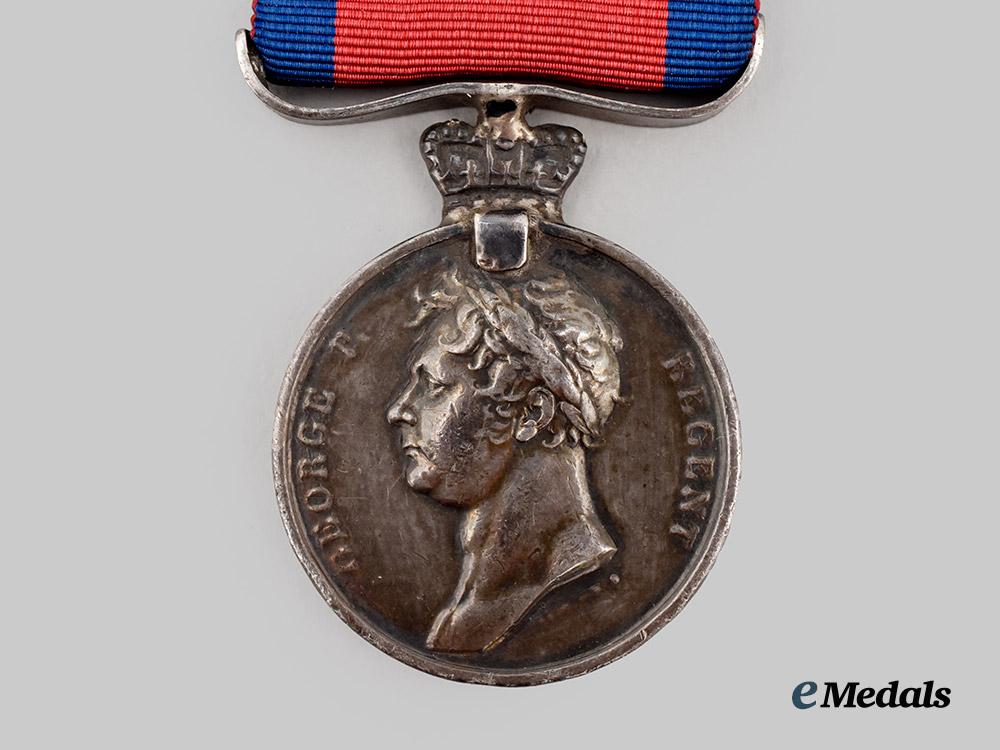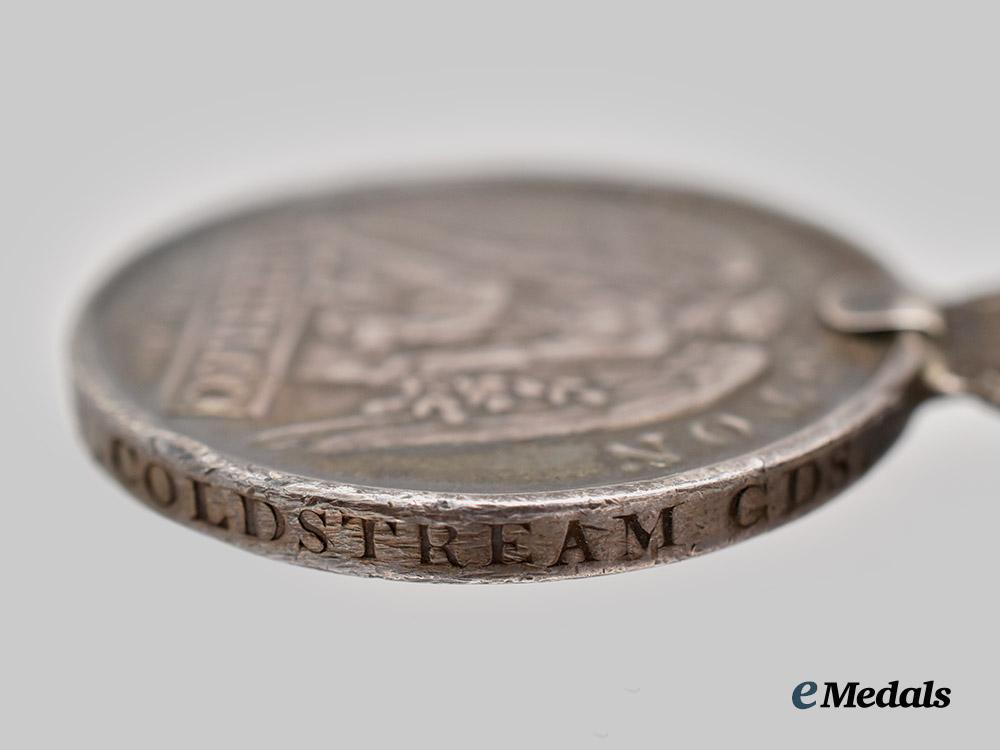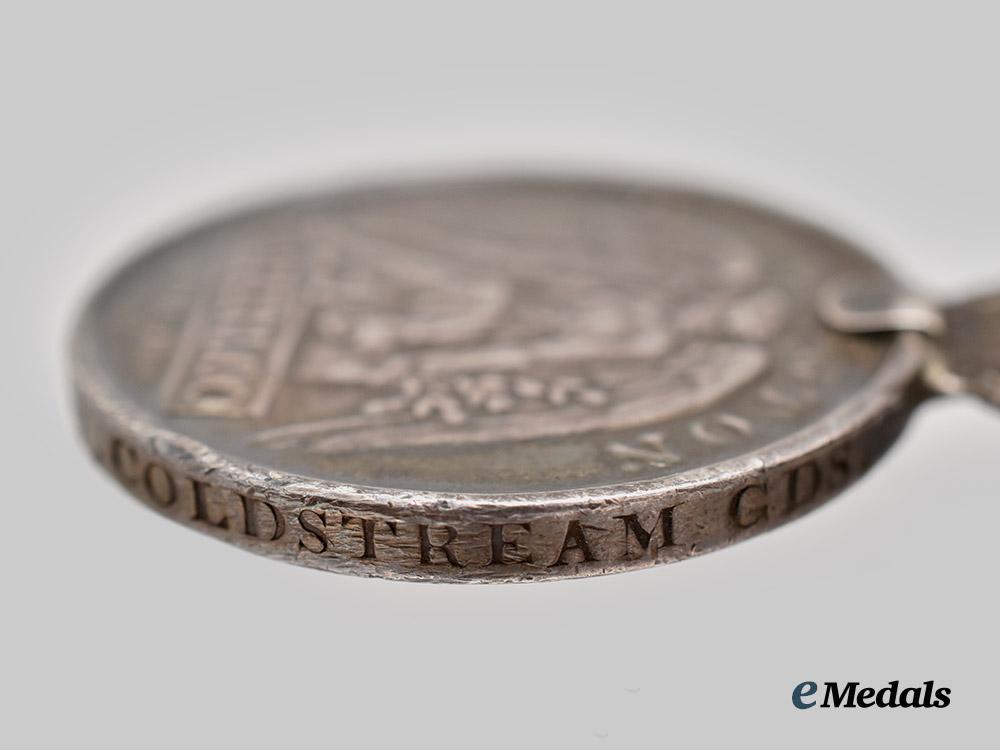
LOADING ...
In response to evolving domestic opinion, eMedals Inc has made the conscious decision to remove the presentation of German Third Reich historical artifacts from our online catalogue. For three decades, eMedals Inc has made an effort to preserve history in all its forms. As historians and researchers, we have managed sensitive articles and materials with the greatest of care and respect for their past and present social context. We acknowledge the growing sentiments put forth by the Canadian public and have taken proactive actions to address this opinion.







United Kingdom. A Waterloo Medal to Private Patrick McCullin, 2nd Battalion Coldstream Guards
United Kingdom. A Waterloo Medal to Private Patrick McCullin, 2nd Battalion Coldstream Guards
SKU: ITEM: M0642-5
Current Bid:
Your Max Bid:
Bid History:
Time Remaining:
Couldn't load pickup availability
Shipping Details
Shipping Details
eMedals offers rapid domestic and international shipping. Orders received prior to 12:00pm (EST) will be shipped on the same business day.* Orders placed on Canadian Federal holidays will be dispatched the subsequent business day. Courier tracking numbers are provided for all shipments. All items purchased from eMedals can be returned for a full monetary refund or merchandise credit, providing the criteria presented in our Terms & Conditions are met. *Please note that the addition of a COA may impact dispatch time.
Shipping Details
eMedals offers rapid domestic and international shipping. Orders received prior to 12:00pm (EST) will be shipped on the same business day.* Orders placed on Canadian Federal holidays will be dispatched the subsequent business day. Courier tracking numbers are provided for all shipments. All items purchased from eMedals can be returned for a full monetary refund or merchandise credit, providing the criteria presented in our Terms & Conditions are met. *Please note that the addition of a COA may impact dispatch time.
Description
Description
Instituted July 29, 1815. A Waterloo Medal, in silver, full size, naming officially impressed on the rim PATRICK M’CULLIN, 2nd BATT. COLDSTREAM GDS., privately made crown suspension with a delicately curved bar, along with a replacement ribbon, minor contact marks including edge bruises evident (typical of age), dark patina overall, remains in extremely fine condition.
Footnote: Patrick McCullin enlisted on December 5, 1803, serving during the period of December 25, 1811 until December 24, 1816. He is present on the Waterloo Medal Roll in Lt. Colonel Sir. R. Arthbuthnots Company, 2nd Battalion, Coldstream Guards, as Patrick “McCullen” (misspellings were common during the period). McCullen is also named on multiple Army Muster Books and Paylists between 1814-1816 further corroborating his active duty.
At the Battle of Waterloo on 18 June 1815, the 2nd Battalion of the Coldstream Guards played a crucial and multifaceted role in the defeat of Napoleon. Most famously, they were instrumental in the defense of the fortified farm complex of Hougoumont, positioned on Wellington’s right flank. Early in the battle, French forces launched repeated and determined attacks on the position, hoping to break through the Allied line. The 2nd Battalion was among the first reinforcements sent to support the small garrison already holding the farm. Fighting in brutal close-quarters combat, the Coldstream Guards helped repel numerous French assaults throughout the day. One of the most legendary moments of the battle occurred when a group of Coldstreamers helped to close the north gates of Hougoumont after French troops forced their way in—an action later described by Wellington as pivotal to the outcome of the battle.
While part of the battalion was engaged at Hougoumont, other companies remained in line with the 1st Guards Brigade under Major General Peregrine Maitland, positioned just behind the ridge at Mont-Saint-Jean. These troops endured sustained artillery bombardment as they waited in reserve. Late in the afternoon, they played a decisive role in one of the battle’s climactic moments: the repulse of Napoleon’s Imperial Guard. As the elite French troops advanced toward the Allied center in a last effort to turn the tide, the Guards, including elements of the 2nd Battalion, rose from behind the ridge and delivered devastating volley fire followed by a bayonet charge that shattered the French column and triggered a general rout across Napoleon’s line.
The battalion paid a heavy price for its bravery. Of the approximately 440 to 450 men who went into battle, nearly 200 became casualties. Around 44 were killed, with 150 to 160 wounded, and a small number reported missing or captured—amounting to nearly 45 percent of their strength. Despite these severe losses, the battalion maintained its cohesion and fighting spirit throughout the day, contributing significantly to the survival of Wellington’s right flank and the ultimate Allied victory. Following the battle, the 2nd Battalion advanced with the Allied army into France and took part in the occupation of Paris. Their courage and discipline at Waterloo, combined with their earlier distinguished service in the Peninsular War, solidified the battalion’s reputation as one of the British Army’s most formidable and reliable units.
Description
Instituted July 29, 1815. A Waterloo Medal, in silver, full size, naming officially impressed on the rim PATRICK M’CULLIN, 2nd BATT. COLDSTREAM GDS., privately made crown suspension with a delicately curved bar, along with a replacement ribbon, minor contact marks including edge bruises evident (typical of age), dark patina overall, remains in extremely fine condition.
Footnote: Patrick McCullin enlisted on December 5, 1803, serving during the period of December 25, 1811 until December 24, 1816. He is present on the Waterloo Medal Roll in Lt. Colonel Sir. R. Arthbuthnots Company, 2nd Battalion, Coldstream Guards, as Patrick “McCullen” (misspellings were common during the period). McCullen is also named on multiple Army Muster Books and Paylists between 1814-1816 further corroborating his active duty.
At the Battle of Waterloo on 18 June 1815, the 2nd Battalion of the Coldstream Guards played a crucial and multifaceted role in the defeat of Napoleon. Most famously, they were instrumental in the defense of the fortified farm complex of Hougoumont, positioned on Wellington’s right flank. Early in the battle, French forces launched repeated and determined attacks on the position, hoping to break through the Allied line. The 2nd Battalion was among the first reinforcements sent to support the small garrison already holding the farm. Fighting in brutal close-quarters combat, the Coldstream Guards helped repel numerous French assaults throughout the day. One of the most legendary moments of the battle occurred when a group of Coldstreamers helped to close the north gates of Hougoumont after French troops forced their way in—an action later described by Wellington as pivotal to the outcome of the battle.
While part of the battalion was engaged at Hougoumont, other companies remained in line with the 1st Guards Brigade under Major General Peregrine Maitland, positioned just behind the ridge at Mont-Saint-Jean. These troops endured sustained artillery bombardment as they waited in reserve. Late in the afternoon, they played a decisive role in one of the battle’s climactic moments: the repulse of Napoleon’s Imperial Guard. As the elite French troops advanced toward the Allied center in a last effort to turn the tide, the Guards, including elements of the 2nd Battalion, rose from behind the ridge and delivered devastating volley fire followed by a bayonet charge that shattered the French column and triggered a general rout across Napoleon’s line.
The battalion paid a heavy price for its bravery. Of the approximately 440 to 450 men who went into battle, nearly 200 became casualties. Around 44 were killed, with 150 to 160 wounded, and a small number reported missing or captured—amounting to nearly 45 percent of their strength. Despite these severe losses, the battalion maintained its cohesion and fighting spirit throughout the day, contributing significantly to the survival of Wellington’s right flank and the ultimate Allied victory. Following the battle, the 2nd Battalion advanced with the Allied army into France and took part in the occupation of Paris. Their courage and discipline at Waterloo, combined with their earlier distinguished service in the Peninsular War, solidified the battalion’s reputation as one of the British Army’s most formidable and reliable units.







You May Also Like
Russia, Imperial. An Order of St. Vladimir, IV Class in Gold, Military Division, c.1905
EU24277
Yugoslavia, Kingdom. An Order Of St. Sava, Knight Commander Cross, By Huguenin, c.1935
EU24276
Serbia, Kingdom. An Order Of Saint Sava, Breast Star
EU24275
Serbia, Kingdom. An Austrian-Made Order of St. Sava, Type II, Grand Cross c.1905
EU24274
Russia, Imperial. An Order of St. Vladimir, IV Class in Gold, Civil Division, c.1830
EU24273
-
Russia, Imperial. An Order of St. Vladimir, IV Class in Gold, Military Division, c.1905
EU24277
Add to CartRegular price $3,450 USDRegular price $0 USD Sale price $3,450 USDUnit price / per -
Yugoslavia, Kingdom. An Order Of St. Sava, Knight Commander Cross, By Huguenin, c.1935
EU24276
Add to CartRegular price $425 USDRegular price $0 USD Sale price $425 USDUnit price / per -
Serbia, Kingdom. An Order Of Saint Sava, Breast Star
EU24275
Add to CartRegular price $850 USDRegular price $0 USD Sale price $850 USDUnit price / per -
Serbia, Kingdom. An Austrian-Made Order of St. Sava, Type II, Grand Cross c.1905
EU24274
Add to CartRegular price $850 USDRegular price $0 USD Sale price $850 USDUnit price / per -
Russia, Imperial. An Order of St. Vladimir, IV Class in Gold, Civil Division, c.1830
EU24273
Add to CartRegular price $2,850 USDRegular price $0 USD Sale price $2,850 USDUnit price / per
Do you have a similar item you are interested in selling?
Please complete the form and our client care representatives will contact you.
Sell Item


















